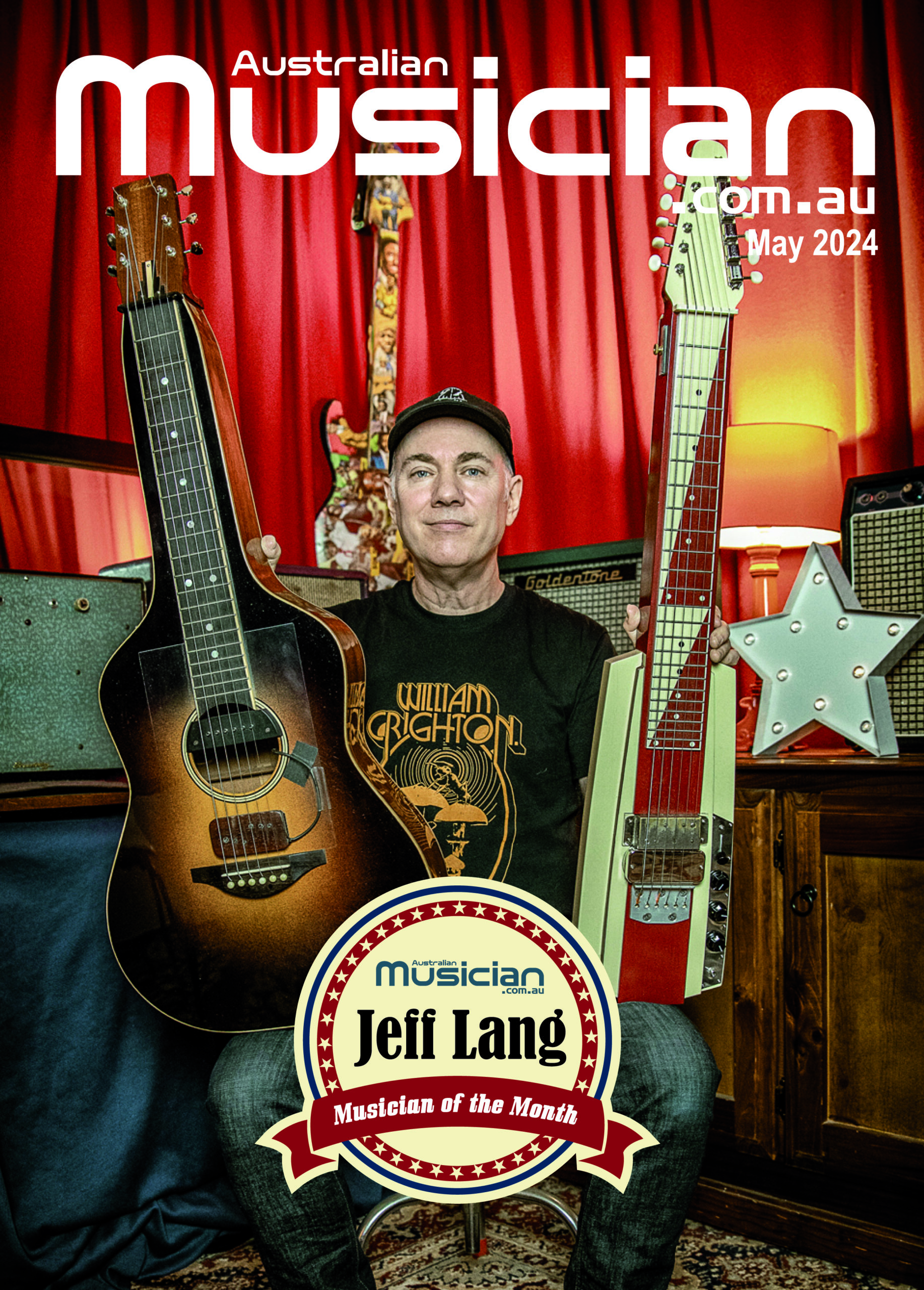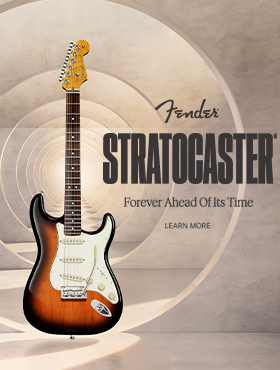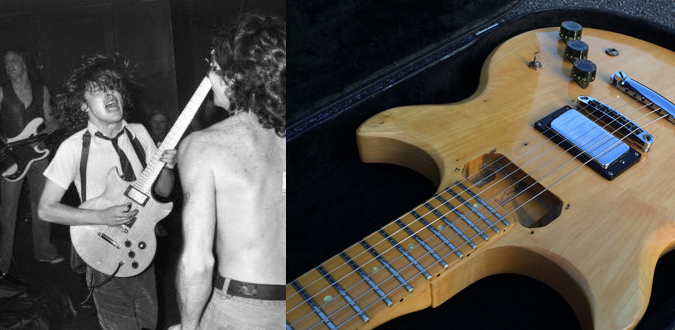
Has a long lost, rare AC/DC guitar been found in Wakefield, Yorkshire? Richard Henry thinks so and we’re inclined to believe him. Greg Phillips investigates.
Richard Henry knows guitars. He’s been around them for a long time, as a stage manager, roadie and guitar tech for artists such as Johnny Marr, The Charlatans, Cast, The Coral, and Buzzcocks to name a few. In 2014 he quit the road to concentrate on his specialist vintage and used American guitar business, as well as running Pear Studios, a rehearsal space in South Manchester with one of his dearest friends. In fact he knows guitars so well, that he has not only come across many beautiful vintage instruments in his career but has also handled some historically significant guitars too. In 2006, he sold Keith Richard’s original 59 sunburst Les Paul and last year, brokered the sale of the famous Peter Green/Gary Moore 1959 sunburst Les Paul. Among his many high profile musician clients, you’ll find Billy Gibbons, Metallica, Johnny Marr, Joe Bonamassa, Billy Duffy, and our own part-time singer, songwriter Guy Pearce.
Like any enthusiastic collector, Richard trawls through Google on a regular basis and occasionally his curiosity leads to a little treasure amongst the tons of trash. Recently Richard was searching online locally and got a sniff of something unusual, a guitar advertised as a 1973 Gibson L-6S double cut with hard case. “I was searching for Gibson guitars in my locality online one Thursday evening while relaxing at home and stumbled upon a strange Gibson guitar I didn’t think existed,” Richard says. It was advertised as a 1973 Gibson L-6S double cut with hard case and the advert carried the following description:
And now for something a bit different. A Gibson L6-S from 1973 – ‘double cut’. The only problem is that as far as I have been able to ascertain, this model of L6-S was never made by Gibson. A bit of detective work – confirmed by my local luthier – appears to indicate that this guitar started life as a standard L6-S and then underwent corrective surgery to make it a ‘double-cut’. However, it is a damn fine piece of cutting and easily as precise as you would have got from Gibson at the time. I suspect that someone was trying to re-create the guitar played by a young Angus Young (which also must have been a ‘home-made’ job).
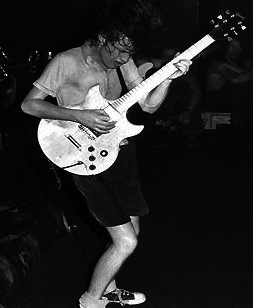
The seller had also included the pictures of the guitar as it exists now and pictures of Angus Young playing a similar looking guitar at AC/DC’s landmark residency at the famous Marquee Club in London in 1976. See picture to the right.
For Richard Henry, a quest had begun. He was drawn to the guitar because A) he had never seen a double cut L-6S before and B) he was a huge AC/DC fan. As a collector and trader of guitars, the more you know about an instrument, the easier it is to determine its value. Intrigued by now, Richard studied up on the photos of Angus Young provided by the seller and sought out other AC/DC pictures from the same era on the internet. What he discovered got him very excited indeed.
“When studying the pictures I noticed a distinct knot in the wood below the tailpiece near the bottom of the body and even from the small black and white images of the guitar Angus was playing, I saw a match on Angus’ L-6S,” he says. “Then I noticed the two ‘flashes’ in the maple on the left hand side … also a match. Plus I saw the seam line from the three piece body on the left hand side of the bridge area, yet another match. I Googled ‘Angus Young L-6S’ and ‘Malcolm Young L-6S’ and found more images. I then found a distinct area of mineral lines in the grain pattern just below the left hand waist of the body. Another match. I immediately contacted the seller and told him I would buy the guitar. The seller was located only an hour away from my home and I would have jumped in the car that very minute if if he hadn’t been working since 5am that day and was just going off to bed.”
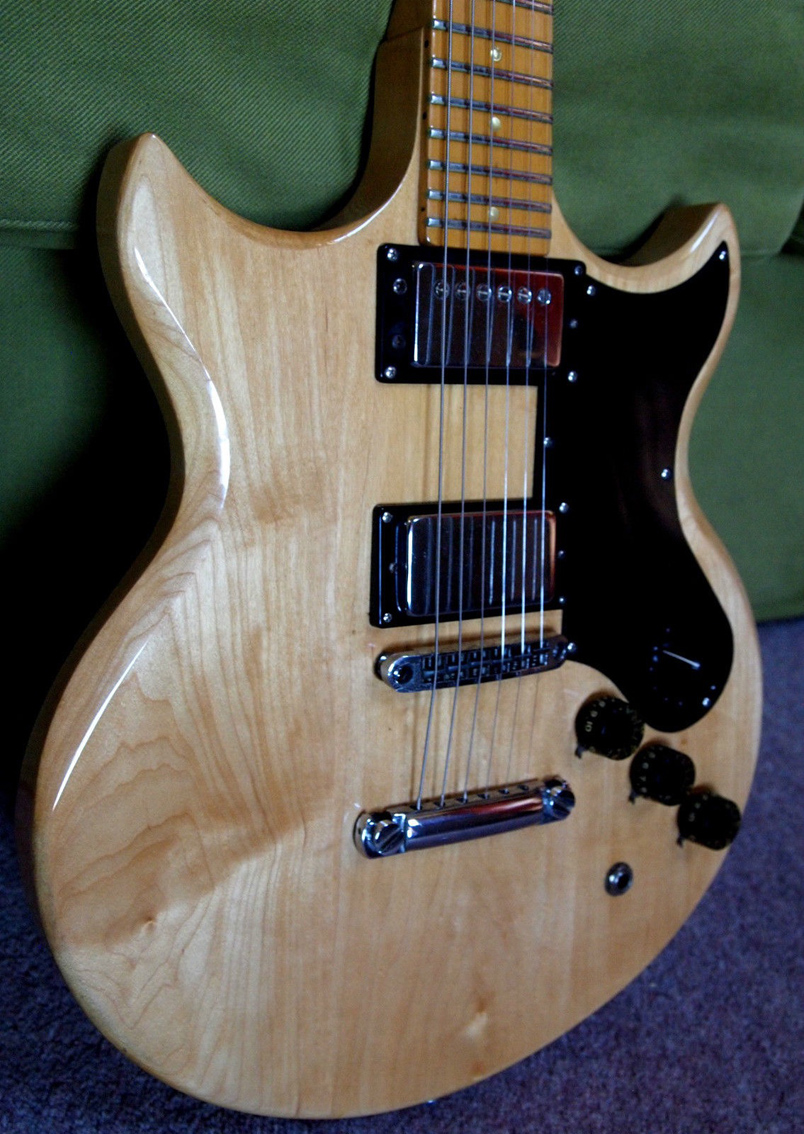
Richard continued researching the guitar and found some threads on various guitar and AC/DC fan forums. The guitar seemed to be one of Malcolm Young’s earlier guitars from around 1973, as used on the band’s first ever TV appearance on the Australian TV show ‘Countdown’. Obviously at that stage, the guitar was in its original condition featuring a single cutaway with its pickguard intact. Henry, the guitar detective had concluded that the guitar must have been converted into a double cut shortly before the band’s arrival in the UK in 1976. “Sometime between 1976 and 1980, the front pickup and pickguard were removed completely, in keeping with Malcolm’s legendary Gretsch Jet Firebird, which only retains the bridge pickup,” he says. As well as Angus and Malcolm both using the guitar, Richard suggests that the guitarist’s younger nephew, Stevie Young also used the guitar on the Back in Black tour in 1980 while playing support in his band Starfighter, after Bon Scott’s demise. He later played rhythm guitar for AC/DC in 1998, when Malcolm was dealing with an alcohol problem.
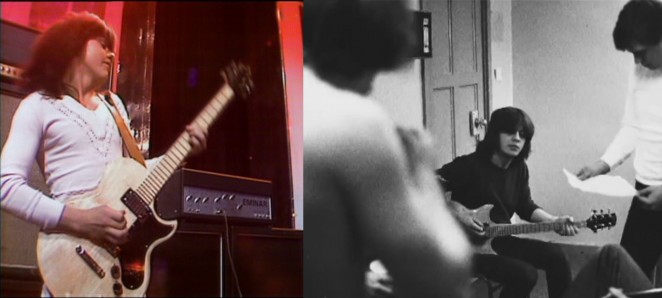
Finally Richard took possession of the advertised guitar. “I had to wait until the current owner had returned home from work,” he explains. “So with my money burning a hole in my pocket, I made the hour long drive and returned with the guitar in the boot (trunk) of my car. Upon immediate examination of the guitar, it was clear that the currently installed neck pickup and plastic mounting ring were non-original replacements and the pickguard was a home made affair. In the case pocket was an invoice dated a few years earlier from a cabinet maker who had supplied and fitted the non original pickguard, obviously after AC/DC’s ownership. It was another confirmation that this indeed was the very same guitar owned, used and shared by both guitarists in AC/DC and later by their nephew.”
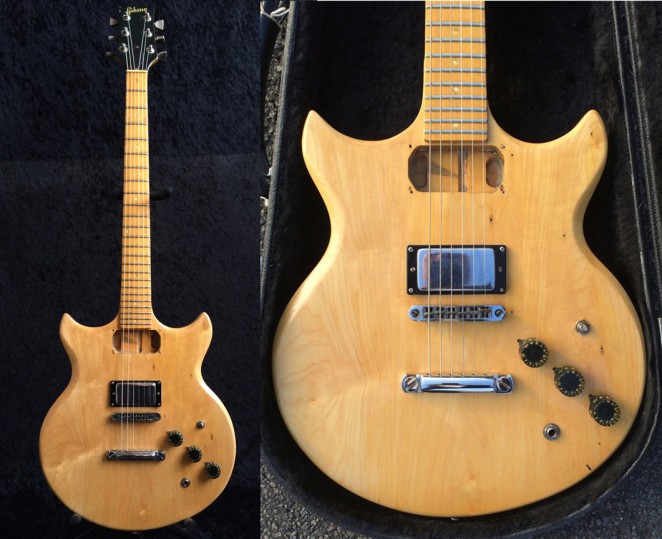
Upon receipt of the guitar, Richard removed the non-original pickguard and neck pickup, so the guitar is today in exactly the same condition as it was, as he believes, when Malcolm last owned it. This is where Australian Musician gets involved. Being an Australian music website and the land AC/DC hail from, Henry contacted us to see if we’d be interested in sharing his story. Of course we were but still needed to clarify a few points before jumping onboard. But who could we talk to? If anyone could shed some light on the authenticity of this guitar, it would be our friend and former AC/DC bass player Mark Evans.
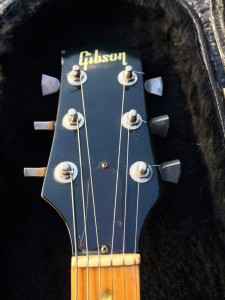 Going by the same photos that Richard supplied, Mark wasn’t one hundred percent happy to verify Richard’s claims but did reveal some pretty incriminating evidence.
Going by the same photos that Richard supplied, Mark wasn’t one hundred percent happy to verify Richard’s claims but did reveal some pretty incriminating evidence.
“Here’s what I can tell you,” he says. “Mal bought the guitar from Harry Landis on Park St, Sydney in early 1975. It is not his original AC/DC guitar, that was always the Gretsch Jet Firebird. The L6-S was purchased because his Gretsch had one of its many headstock breaks and was in the repair shop. Mal needed a guitar, so he bought the Gibson. It was the guitar he was using when I joined in March 1975 until the Gretsch was fixed, then it became a spare. The guitar was customised to the double cut in May/June 1976 in London by Martin Birch in Kentish Town. I went with him to drop it off. The guitar was rarely used, I can only remember Angus using it once at The Marquee after the guitar had come back as the double cut. I don’t remember Mal using it either, he had a blonde Tele by then. I can’t confirm that is Mal’s guitar … sure looks like it and who else would do that to a L6-S unless they were trying to replicate it? The serial number may help, it would have been prior to the “decal” serial numbers in 1975/76/77, so it would be an impressed 6 digit number and not a later 8 digit number.”
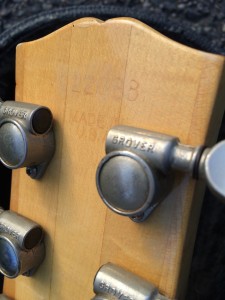 Richard has since confirmed that the guitar does indeed have the impressed 6 digit serial number (See photo on right). However, one thing still concerned Evans over the validity of the guitar. He couldn’t understand why Mal’s guitar wouldn’t still be in the possession of Stevie Young if he had used it on an AC/DC tour. On hearing Mark’s concerns, the ever intrepid Richard Henry also got in touch with Stevie Young’s brother Fraser, who spoke with Stevie and confirmed that Mal had given him the guitar, which he later, regretfully sold. When we last heard from Richard, he was investigating the Martin Birch modification link as the serial number match is really the only missing piece of the puzzle. Irrespective of that, Richard is convinced of the guitar’s authenticity and the evidence is overwhelmingly in his favour. We get the feeling that the final chapter to this story is not too far away at all.
Richard has since confirmed that the guitar does indeed have the impressed 6 digit serial number (See photo on right). However, one thing still concerned Evans over the validity of the guitar. He couldn’t understand why Mal’s guitar wouldn’t still be in the possession of Stevie Young if he had used it on an AC/DC tour. On hearing Mark’s concerns, the ever intrepid Richard Henry also got in touch with Stevie Young’s brother Fraser, who spoke with Stevie and confirmed that Mal had given him the guitar, which he later, regretfully sold. When we last heard from Richard, he was investigating the Martin Birch modification link as the serial number match is really the only missing piece of the puzzle. Irrespective of that, Richard is convinced of the guitar’s authenticity and the evidence is overwhelmingly in his favour. We get the feeling that the final chapter to this story is not too far away at all.
Richard’s vintage guitar business website can be found at http://www.guitarsyoucantrust.co.uk/

